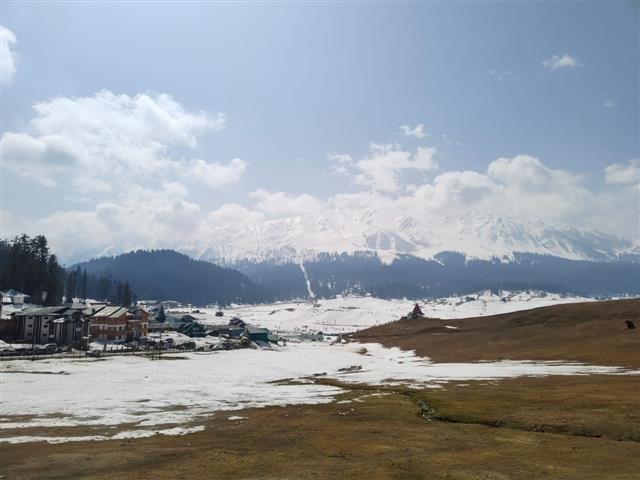The western Himalayan region has witnessed an alarming 80% deficit in precipitation in December, and January has continued to be notably dry, causing concerns about the unusual weather patterns affecting Ladakh and Kashmir. The India Meteorological Department (IMD) attributes this to the absence of active western disturbances during the winter season. Western disturbances, originating in the Mediterranean region, typically bring unseasonal rainfall to northwest India.
The prolonged dry spell has led to an 80% precipitation deficit in the western Himalayan region, particularly impacting the Chillai Kalan period from December 21 to January 29, which is crucial for freshwater availability in the region before the southwest monsoon. The scarcity of snowfall during this period has reduced water levels in rivers and streams, affecting the ecosystem.
According to IMD scientists Krishna Mishra, Naresh Kumar, and RK Jenamani, maximum temperatures have been below normal by 5-8 degrees Celsius over the northern plains since December 29. The absence of active western disturbances has been a significant factor, contributing to very dense fog persisting over northwest India since December 25, reaching its peak on January 14.
The unprecedented precipitation deficit in December and the ongoing dry spell in January raise concerns about freshwater availability in the Himalayan region. Sonam Lotus, the head of the meteorological center in Leh, Ladakh, expressed worries about the unusually warm weather during peak winter, causing crops to bloom early. This unexpected blooming poses challenges for agriculture and horticulture production.
The Chillai Kalan snowfall period is crucial for the region’s freshwater source, and the current dry spell has affected water levels in rivers and streams. The reduced availability of freshwater could impact agricultural activities and the overall ecosystem in the region.
Scientists attribute the severe weather conditions to three main factors: the lack of active western disturbances, prevailing El-Nino conditions, and a strong jet stream. El-Nino, characterized by abnormal warming in the central Pacific Ocean, contributes to altered weather patterns.
The mechanics of fog formation play a role in the prolonged fog observed in northwest India. Three conditions are required for fog formation: weak low-level winds, moisture, and overnight cooling. The absence of strong western disturbances disrupts these conditions, contributing to the persistent fog.
Additionally, strong jet streams prevailing over north India for the last five days have led to the subsidence of cold air, enhancing cold wave/cold day conditions. These conditions are expected to continue over the next five days, intensifying the challenges posed by the ongoing weather anomalies.
The challenges presented by the unusual weather patterns underscore the importance of addressing the factors contributing to the precipitation deficit and exploring measures to mitigate the impact on freshwater availability, agriculture, and the overall ecosystem in the Himalayan region. Ongoing monitoring and research will be crucial for understanding the long-term implications of these weather anomalies and implementing strategies for resilience and adaptation.
Book Paris Trip
Paris sightseeing
Book Paris activities
Louvre museum paris
Paris limousine rental
Rolls Royce Paris
Eiffel Tower Paris
Airport Transfer Paris
Book Paris Taxi
Seine River Cruise
Wine Tasting Paris
Paris luxury hotels
Switzerland luxury hotels
Europe Car rental
Europe coach rental
Paris Limousine
Dior Paris
Beauvais Airport transfer
